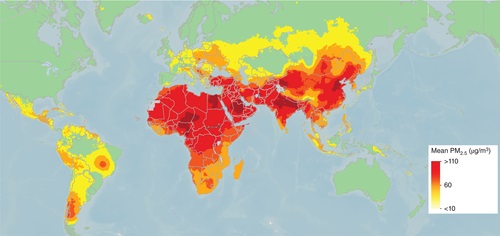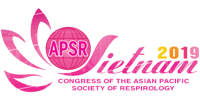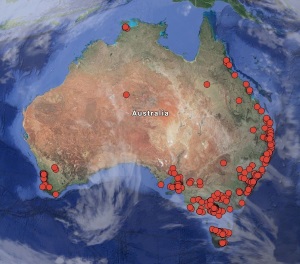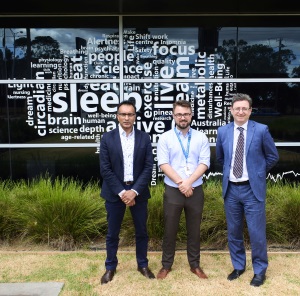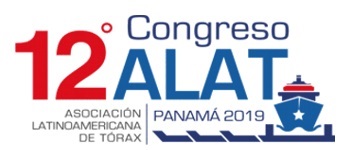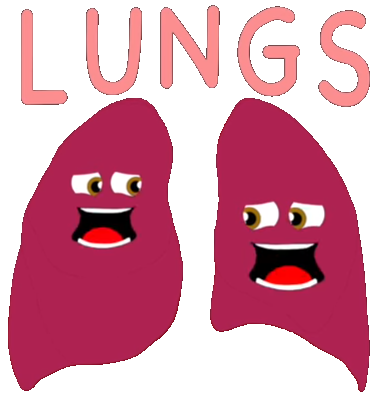

No. 117 (April 2019)
APSR News
Air Pollution
A joint APSR/ATS perspective of air pollution in the Asia-Pacific region
Read this recently published APSR-ATS perspective, the first joint-society publication (in the AJRCCM and Respirology).
Experts from the US, Hong Kong, Republic of Korea, Japan, China and Australia have worked together to bring you:
Air Pollution in the Asia-Pacific Region. A Joint Asian Pacific Society of Respirology/American Thoracic Society Perspective
Crystal M North, Mary B Rice, Thomas Ferkol, David Gozal, Christopher Hui, Soon-Hee Jung, Kozo Kuribayashi, Meredith C McCormack, Michiaki Mishima, Yasuo Morimoto, Yuanlin Song, Kevin C Wilson, Woo Jin Kim, Kwun M Fong
onlinelibrary.wiley.com/doi/10.1111/resp.13531
We hope to bring you results of further APSR assembly collaboration activities with our sister societies in the future.
Congress news
Vietnam 2019
Abstracts are now being accepted for the 2019 Congress to be held in Hanoi, Vietnam, 14-17 November 2019:
A couple of months ago in Vietnam, Google proudly reminded us that 2019 is the Year of the Pig.
For those who believe that the zodiac has any meaning, the pig represents "Communication and Friendship".
So there couldn't be a better year to declare that 2019 in Vietnam is also the Year of the APSR Congress!
Keep checking apsr2019.com regularly for updates.
Get two birds with one stone!
i.e. Get two registrations for the price of one bird!
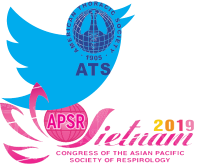
Volunteer to live-tweet and upload to the APSR's social networking accounts during the ATS International Conference 2019 in Dallas and get a free registration for the APSR Congress 2019 in Hanoi.
We are looking for a volunteer to contribute to the APSR's Twitter, Facebook and Instagram accounts; in particular, APSR-related activities at the Conference.
This is an open invitation for any young APSR member who is attending the ATS International Conference to apply. The successful applicant will have excellent SNS skills, and plans to attend all (or most) of the ATS International Conference from 17–May 2019.
Preference will be given to those aged ≤ 30.
The successful volunteer will be offered complimentary registration for the APSR Congress in Hanoi, November 2019. He or she will be required to contact the APSR Secretariat staff each day to agree the next day's schedule and receive any special instructions, and provide around 10–20 tweets and uploads each day to the APSR's Twitter, Facebook and Instagram accounts. Examples of items of interest include the:
- opening ceremony
- major sessions
- APSR young investigator sessions
- APSR-ISRD joint session on 18 May
- notices from the APSR booth
- notices from the venue
- etc.
To apply for this opportunity, please submit to Ms Kishigami at the APSR Secretariat rina.kishigami@theapsr.org:
- a brief (one page) curriculum vitae
- the dates you plan to attend the Conference
- your Twitter, Facebook and Instagram accounts for the APSR Secretariat to see your past tweets and uploads
Application deadline:
- 25 April 2019
Contact the APSR Secretariat APSR@theapsr.org if you have any queries.
We are looking forward to working with you!
Travel Award opportunities
The January 2019 issue of the APSR Newsletter includes glowing reports from last year's award winners.
Enjoy similar rewards yourself by taking advantage of the following opportunities:
-
APTA Young Investigator Award
Awarded to an APSR Young Investigator from an Asia-Pacific LMIC who is presenting the best overall paper at the APSR Congress.
-
APSR / KYF Geriatric Respirology Young Investigator Award
Awarded to an APSR Young Investigator from an Asia-Pacific LMIC who is presenting original work on geriatric respirology at the APSR Congress.
-
APSR / Malcolm Winterburn Lung Cancer Young Investigator Award
Awarded to an APSR Young Investigator from an Asia-Pacific LMIC who is presenting original work on lung cancer at the APSR Congress.
-
APSR / Norbert Berend COPD Young Investigator Award
Awarded to an APSR Young Investigator from an Asia-Pacific LMIC who is presenting original work on COPD at the APSR Congress.
-
APSR / Paul Zimmerman Physiology Young Investigator Award
Awarded to an APSR Young Investigator from an Asia-Pacific LMIC who is presenting original work on physiology at the APSR Congress.
-
APSR / Peter Sly Paediatric Young Investigator Award
Awarded to an APSR Young Investigator from an Asia-Pacific LMIC who is presenting original work on paediatric respiratory medicine at the APSR Congress.
Awards and opportunities for APSR Assembly members
Awards are presented on an ad hoc basis by Assembly Heads, with various prizes for various achievements. Assembly Heads will notify their members of opportunities that arise.
| * | "LMIC" is defined as a "lower-middle income country", a list of which can be seen at data.worldbank.org/income-level/low-and-middle-income. |
Our Members, Our Future
Continuing this series we are delighted to share a tribute to Prof. Yoshinosuke Fukuchi, prepared by Prof. Michiaki Mishima.
This series complements our APSR Members' Honour Roll, on which as a member, you are welcome to add your appreciation of your mentor(s) at any time.
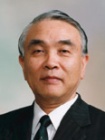
Prof. Fukuchi
A tribute to Yoshinosuke Fukuchi MD PhD
Professor Emeritus Juntendo University Tokyo Japan
Lifelong commitment in research and promotion of respirology
Dr Yoshinosuke Fukuchi graduated from Department of Medicine, Gunma University in 1964, After completing an internship/medical residency at US Air Force Hospital in Tachikawa, Tokyo, he started his early training at Department of Geriatrics, the University of Tokyo Japan in 1966. Under warm but stringent mentorship of Professor Michiyoshi Harasawa, he was awarded a Ph.D. for an experimental study aiming at age effects on bronchial circulation in 1972. He spent a two-year research/clinical fellowship at Meakins-Christie Laboratories (MCL), McGill University, Montreal, Canada in 1974-1976. The MCL was a highly reputed centre for cutting-edge research in pulmonary physiology under the directorship of Professor Peter T Macklem. MCL enabled him to make lasting friendship with many distinguished investigators including Professor Ann J Woolcock. Among nine research papers published during those years, the most notable was a novel finding of cardiogenic oscillation facilitating intrapulmonary diffusive mixing (CGM). CGM may have heralded later development of high frequency ventilation.
He stayed at Tokyo University serving as senior lecture (1979) and associate professor (1986) for 30 years. He was among the first to point out the importance of accelerated aging in the pathogenesis of COPD through physio-chemical studies in Senescent Accelerated Mouse (SAM) around 1990 to 2000. He took the chair of the department of respiratory medicine at Juntendo University in 1996. His research interest in animal model of COPD (SAM and SMP-30 KO) was relentlessly maintained and produced significant papers through his tenure at Juntendo University.
He worked hard always with 4D (Diligence, Dedication, Diversity, Decision) in mind, as principles to fulfill the mission of the chairmanship. We witnessed the department attracting many young doctors who completed successful clinical as well as academic training.
Since the early days of his career the promotion of respiratory science, both in Japan and Asia-Pacific countries, became the priority in addition to his own research interest. This wish grew further when he was appointed Chairman of the International Relations Committee (IRC) of the Japanese Respiratory Society (JRS). In close collaboration with Professors Yoshihiro Hayata, Shiro Kira and J Patrick Barron, IRC could convince the Board of Directors of the JRS to move forward to launch an academic society in the Asia-Pacific region to promote respiratory science and clinical practice toward higher quality. The JRS held an international respiratory conference in Tokyo, 1985. An international panel of distinguished clinician scientists representing the Asia-Pacific region, North/South America and Europe, were called upon to discuss the need and feasibility of such venture in this region. All delegates agreed upon the momentum to step forward to formulate an independent academic society in the Asia-Pacific region. Whenever asked, he recalled an enormous zeal and sagacious advice by which Professor Ann J Woolcock suggested a list of eminent academicians in the Asia-Pacific region to be invited. All the listed delegates in fact made core members of a steering committee of the proposed society. In 1986 the society was officially established under the name of the Asian Pacific Society of Respirology (APSR) during the IUATLD congress in Singapore.
It was decided that a biannual congress was to be organized and the first Congress was held in Tokyo with Professor Michiyoshi Harasawa as presiding president in 1988. The JRS fully supported this congress together with participating member country societies with a great success. This outcome paved a road towards further progress for the APSR. The APSR Secretariat was located in the department of geriatrics in the early days after the launch and he assisted Professor Shiro Kira in business communications with his personal secretary.
In 1996, Respirology was published as the official journal of the Society every 6 months when the Secretariat relocated to a new office in Hongo, Tokyo. Due to the limited membership size and marginal financial income from the congress, it was hard to maintain regular publication of the journal. He, together with Professor J Patrick Barron, managed to overcome this financial difficulty by printing extended abstracts for additional donation to supplement the deficit.
He organized the 41st JRS annual congress in Tokyo and introduced its International Programme in English to meet the mounting need for globalization of the Society's activities. He offered an occasion for delegates from the APSR, ATS, ERS, IUATLAD and ALAT to meet face to face for the first time. This meeting was highly appreciated among global leaders and stimulated later development of Forum of International Respiratory Societies (FIRS).
In 2003, as Chairman of the JRS Board of Directors (BOD) he played a pivotal role in convincing the Board to apply for en bloc membership of the APSR. This was a novel system of securing large number of members on regular basis which gave the APSR greater financial stability thereafter.
His 4D principles has helped him to achieve a productive life and accomplish what he aimed at in his youth.
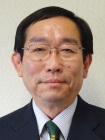
Prof. Mishima
President, Osaka Saiseikai Noe Medical Welfare Center, Japan
President, Osaka Saiseikai Noe Hospital, Japan
Emeritus Professor, Kyoto University, Japan
Professor Mishima highly appreciates that Professor Fukuchi has been a great mentor and a mariner's compass of his life in the past 40 years.
March 2019
Respiratory Updates
The March issue (Vol 11.3) features Invited review series: Tuberculosis update 2018:
- Tuberculosis updates 2018: Innovations and developments to end TB
- Tuberculosis vaccines: Opportunities and challenges
- Update on tuberculosis biomarkers: From correlates of risk, to correlates of active disease and of cure from disease
- Epidemiological, clinical and mechanistic perspectives of tuberculosis in older people
- Drug-resistant tuberculosis: An update on disease burden, diagnosis and treatment
- Where is tuberculosis transmission happening? Insights from the literature, new tools to study transmission and implications for the elimination of tuberculosis
- Implementing the End TB Strategy in the Western Pacific Region: Translating vision into reality
- Latent tuberculosis infection: Opportunities and challenges
- New drugs and regimens for tuberculosis
- Drug resistance mechanisms and drug susceptibility testing for tuberculosis
- Applying new tools to control tuberculosis
Inside Respirology
Vol. 24 Issue 4
| EDITORIALS | |
| 294 | Ambulatory oxygen delivery – an answer: But what is the question? |
| 296 | CPAP treatment for asthma? A question worth pursuing further |
| 298 | Is there a common pattern in physical activity levels comparing diverse chronic airway diseases? |
| 300 | Lumpers versus splitters: What to do with suspected idiopathic pulmonary fibrosis? |
| 302 | Treating moderate – severe obstructive sleep apnoea for cardiovascular health: Is what stake the stakeholder holds important? |
| COMMENTARY | |
| 304 | Time to FOCUS on oral corticosteroid stewardship in asthma management |
| INVITED REVIEW SERIES | |
| Non-Invasive Ventilation | |
| 306 | Non-invasive ventilation: Inspiring clinical practice |
| 308 | Benefits of non-invasive ventilation in acute hypercapnic respiratory failure |
| 318 | High-intensity non-invasive ventilation in stable hypercapnic COPD: Evidence of efficacy and practical advice |
| SYSTEMATIC REVIEW | |
| 329 | Comparison of continuous flow versus demand oxygen delivery systems in patients with COPD: A systematic review and meta-analysis |
| ORIGINAL ARTICLES | |
| Asthma and Allergy | |
| 338 | Effect of CPAP on airway reactivity and airway inflammation in children with moderate – severe asthma |
| Critical Care | |
| 345 | Angiopoietin-2 as a predictor of acute kidney injury in critically ill patients and association with ARDS |
| COPD | |
| 352 | Physical activity associates with disease characteristics of severe asthma, bronchiectasis and COPD |
| Interstitial Lung Disease | |
| 361 |
 |
| Interventional Pulmonology | |
| 369 | Radiofrequency spectral analysis of EBUS for peripheral pulmonary lesions |
| Sleep and Ventilation | |
| 376 |
 |
| CONTEMPORARY CONCISE REVIEW | |
| 382 | Contemporary Concise Review 2018: Bronchiectasis |
| LETTER FROM ASIA-PACIFIC AND BEYOND | |
| 390 | Letter from South Africa |
| CORRESPONDENCES | |
| 392 | Infection risks for patients from healthcare workers with cystic fibrosis |
| 393 | Infection risks for patients from healthcare workers with cystic fibrosis - Reply |
Inside Respirology Case Reports
The following cases have been selected for inclusion in the new May 2019 Respirology Case Reports, Volume 07 Issue 4
Case Reports
| Organizing pneumonia co-existing with carcinoid tumour: complete resolution with bronchoscopic tumour resection |
| Persistent focal pulmonary opacity elucidated by transbronchial cryobiopsy: a case for larger biopsies |
| Effectiveness of pulmonary vasodilators on pulmonary hypertension associated with POEMS syndrome |
| Small cell lung cancer and interstitial pneumonia associated with anti-transcriptional intermediary factor-1γ-positive dermatomyositis |
| Management of skin sarcoidosis with minocycline monotherapy |
| A rare case of lymphadenitis and pulmonary disease caused by Mycobacterium paraffinicum |
| Unusual presentation of Castleman's disease mimicking lung cancer |
Clinical Images
| Flexible bronchoscopy and cryoextraction for critical airway obstruction caused by an endobronchial angioleiomyoma |
Regional society news
The spotlight this month is on
HONG KONG
Each month we share details of activities of a particular country, region or society.
If you would like the spotlight to be on your country, region or society next month, contact the Bulletin Coordinator or APSR Secretariat.
Hong Kong Thoracic Society (HKTS)
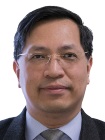
-
We are delighted to announce that Dr David CL Lam has recently (24 March 2019) become President of the Hong Kong Thoracic Society.
Dr Lam is Clinical Associate Professor, Honorary Consultant at the Department of Medicine, Queen Mary Hospital, and Honorary Consultant at the Department of Medicine, HKU-Shenzhen Hospital
In addition to his clinical work and other commitments, he has been an active and valued member of the APSR Executive Committee and chair of the Education Committee for many years, and similarly a driving force within the HKTS
Summary of Hong Kong Thoracic Society activities in 2018 (to 31 October 2018), reported by APSR Councillors representing the HKTS

The HKTS joined the APSR as an en bloc membership society in April 2018. The HKTS is the local professional society for all the respirologists in Hong Kong. The HKTS works with another local professional education organization – the CHEST Delegation Hong Kong and Macau – to steer professional and public education on respiratory medicine.
In 2018 the following activities were held:
Annual Scientific Meeting, March 2018
The flagship annual scientific meeting featured scientific symposia on respiratory medicine including management of COPD, asthma, infectious diseases and allied health symposium.
Public educational event on advancement in respiratory diseases
The theme of the event was "Newer therapies for COPD and Asthma including bronchial thermoplasty, bronchoscopic lung volume reduction and asthma biologic therapy". Game booths and health check booths were set up at the venue.
Airway disease Symposium, 1-2 September 2018
A special two-day Airway disease symposium was held in September 2018, covering topics on all aspects of COPD and co-morbidities as well as relevant interventions.
Autumn Respiratory Seminar cum Pleural Disease workshop, November 2018
The event this year focused on different aspects of respiratory illness including respiratory infections, asthma, and pulmonary intervention. The event was preceded with a one-day hands-on workshop on pleural diseases and thoracic ultrasonography.
Other notable society events and news:
Japan
Japanese Respiratory Society
The 59th Annual Meeting of the Japanese Respiratory Society will be held on 12-14 April 2019 at the Tokyo International Forum.
The Meeting's president will be Prof. Koichiro Tatsumi (Department of Respirology, Chiba University)
Details: www.jrs.or.jp/english/?content_id=27
We are delighted to announce three APSR Travel Awardees for this Meeting:
-
Dr Rachel Ee Lin Foong
NHMRC Early Career Fellow, Telethon Kids Institute, Perth, AustraliaDr Foong will present "Ability of the Lung Clearance Index to Monitor the Progression of Early Lung Disease in Children with Cystic Fibrosis"
-
Dr Ralph Elvi M Villalobos
Philippine College of Chest PhysiciansDr Villalobos will present "Safety and Efficacy of Beta Blockers in COPD: A review"
-
Dr Ching-Yao Yang
Graduate school of Pathology, National Taiwan UniversityDr Yang will present "The Impact of Pre-Treatment PD-L 1 on Clinical Outcomes of Lung Adenocarcinoma Patients with EGFR mutations Receiving Targeted Therapies"
Extra-regional societies
Panama
The 12th Congress of the Asociación Latinoamericana del Tórax (ALAT) will take place at the ATLAPA Convention Center in Panama City 3–6 July 2019.
By the kind invitation of Congress Scientific Committee, Dr Kwun Fong (APSR President) and Dr David C L Lam (Immediate Past Chair of the APSR Education Committee) will be the APSR's representative speakers at the Congress.
The symposium APSR–ALAT–WHO essential medicine for respiratory illnesses: unique window of opportunity to address global equity, will be held on 08:00 – 10:00 on 6 July in La Huaca Room of the conference centre:
- "Access of essential medicines in smoking cessation"Dr David C L Lam
- "Access of essential drugs in COPD: LAMA"Dr Rogelio Perez Padilla
- "Access of essential medicines in lung cancer"Dr Kwun Fong
- "Access of essential medicines in Asthma: LABA / ICS"Dr Federico Daniel Colodenco
- Q&A
The APSR is looking forward to collaborating further with the ALAT in the future.
Health news
Do the Do-Re-Me
Most adults probably find this YouTube animation annoying, but children and those who like rap "music" might appreciate it.
However, both children and adults could enjoy the benefits outlined in the following article from Wales, UK. It's not news, but is a worthwhile reminder of an enjoyable treatment for lung patients:
Sing for lung health
A singing group is helping people living with chronic respiratory conditions to cope when breathlessness restricts their lives.
The Bangor Singing for Lung Health group acts as therapy for patients who have COPD, asthma, bronchiectasis and pulmonary fibrosis. Nurse Olwen Davies said singing helped with breathing techniques. Betsi Cadwaladr University Health Board has made the sessions accessible to all patients who need them.
Ms Davies, a respiratory nurse, said patients attending the sessions - which started in May 2016 - were "doing far more than 'just singing'. It provides a safe, friendly environment to meet, relax, interact, focus and engage with others who have similar health problems," she said. "Many who attend the sessions have said they have helped with their self-management and breathing techniques."
Gillian Saxon, 63, from Llangefni, Anglesey, who has bronchiectasis, said it was "amazing" how her breathing had improved since joining the group. "With my condition it is a real struggle to breathe which impacts on my sleeping pattern," she said. "Coming to this group has made me realise I am not on my own and I get the support that I need."
Pat Roberts, 71, from Bangor, Gwynedd, who also has bronchiectasis, added: "I really was housebound before coming to this group. "It was a struggle to go anywhere as I found it so hard to catch my breath but since coming to the sessions I get out and about a lot more. I can even sing in church better now. It has brought a lot of pleasure back into my life."
The sessions are run by singing performer and teacher Jenny Pearson, who works for the Welsh National Opera and Boys Aloud, and managed by Betsi Cadwaladr University Health Board's professional lead of art therapies, Christine Eastwood, who piloted the first trial in 2013.

An alternative if you cannot join a group!
She said: "Each session is a composition of postural work, relaxation, singing related breathing exercises, simple vocal exercises and singing of an enjoyable and broad song repertoire. The sessions not only offer enjoyment and fun but they also reduce stress, counteracting anxiety and depression. They also provide individuals with gentle physical exercise and physical relaxation and they can release any physical tension."
(Extracted from www.bbc.com/news/uk-wales-45726331
16 March 2019)

26 March was World TB Day
The Forum of International Respiratory Societies (FIRS) recently issued a press release on TB:
Acceleration of UN High-Level Meeting Commitments on TB Focus of International Respiratory Societies
On World TB Day, the Forum of International Respiratory Societies (FIRS) urges governments to leverage the success of the first-ever United Nation (UN) High-Level Meeting (HLM) on the fight against tuberculosis (TB), held in 2018. The meeting produced a UN political declaration on TB and endorsement at the highest level to take the necessary steps to end the TB epidemic.
TB is preventable and curable, yet it remains the world's most common infectious disease killer. The World Health Organization (WHO) estimates that 10 million people fell ill from TB in 2017 and 1.6 million people died. Only 64 percent of the estimated 10 million global TB cases were actually diagnosed and notified. In 2017, approximately 558,000 people developed TB that was resistant to rifampicin (RR-TB), and of these, 82 percent had multidrug-resistant TB (MDR-TB). Only one in four people who needed treatment for MDR/RR-TB in 2017 actually received it.
For the first time the High-Level Meeting brought together heads of state to give the leadership that is urgently needed to address this terrible disease. This unique opportunity and momentum must not be lost.
FIRS is calling on leaders to follow through on the commitments they have made, including to:
- Successfully treat 40 million people for TB, including 3.5 million children and 1.5 million people with drug-resistant TB.
- Provide TB preventive therapy to 30 million people, including four million children under the age of five.
- Include child TB in the child survival agenda and provide family-based TB care.
- Advance all areas of innovation needed to deliver new tools for TB prevention, diagnosis and treatment.
- Support a human rights-based approach to global TB.
- Mobilise U.S. $13 billion annually for TB care, and U.S. $2 billion annually for TB research and development.
FIRS urges the TB community to hold leaders accountable for their commitments, and to push governments to support the changes needed to realise the UN Sustainable Development Goal of ending the TB epidemic by 2030.
Dean E Schraufnagel, MD, executive director, FIRS, said: "If we are to truly see an end to TB, the world's most common and deadly infectious disease, governments must commit to scale up of research, funding, human rights and accountability. It is our job as the TB community to strive for the commitments we've seen from our leaders to become action and not just promises."
By adopting the UN political declaration on TB, national leaders have said they recognise TB as a threat they are committed to eradicating. They have agreed to specific actions. The day to begin implementing this new agenda begins now.
Notes: All quoted TB statistics are from the Global Tuberculosis Report 2018, The World Health Organization
For more information about FIRS please contact Lisa Roscoe lisa.roscoe@firsnet.org.
About FIRS
The Forum of International Respiratory Societies (FIRS) is an organisation comprised of the world's leading international respiratory societies working together to improve lung health globally: American College of Chest Physicians (CHEST), American Thoracic Society (ATS), Asian Pacific Society of Respirology (APSR), Asociación Latino Americana De Tórax (ALAT), European Respiratory Society (ERS), International Union Against Tuberculosis and Lung Diseases (The Union), Pan African Thoracic Society (PATS), Global Initiative for Asthma (GINA), and the Global Initiative for Chronic Obstructive Lung Disease (GOLD).
The goal of FIRS is to unify and enhance efforts to improve lung health through the combined work of its more than 70,000 members globally.
For more information about FIRS please contact Lisa Roscoe lisa.roscoe@firsnet.org.
Education
Webinars from the Thoracic Society of Australia and New Zealand (TSANZ)
The TSANZ are now streaming the following webinars for public viewing:
- The Human Respiratory Viromeby Prof. Allan Glanville
recorded 29 August 2018 - NIV Therapy – viewed via a community lensby Sally Powell
recorded 6 August 2018 - Accelerated Silicosis, kitchen benchtops and the emerging epidemicby Dr Ryan Hoy & Dr Graeme Edwards
recorded 11 October 2018 - Research Techniques To Study Respiratory Diseasesby Prof. Phil Hansbro
recorded 11 October 2018 - What's in a cough? Implications for the care of people with flu and MROsby Prof. Scott Bell
recorded 27 November 2018 - Primary Ciliary Dyskinesia: Common symptoms from an uncommon conditionby A/Prof. Phil Robinson
recorded 11 December 2018 - The Impact of Climate Change on Respiratory Healthby Professor Hubertus Jersmann
recorded 14 February 2019 - What we have learned about children who present to hospital with acute wheezeby Dr Ingrid Laing
recorded 26 February 2019 - How respiratory specialists can best assist smoking patients to quitby A/Prof. Renee Bittoun
recorded 8 March 2019
To access any of the above, click www.thoracic.org.au/events/category/past-tsanz-webinars-on-demand-recordings. Note that for non-TSANZ members, some of the above webinars require payment of a A$10 (plus A$1 GST) pay-as-you-view fee to the TSANZ.
APSR Membership
Donations received
- Dr Jakeer Hussain Shaik FAPSR (India)
has kindly sent his donation towards the Society's goals, as outlined at apsresp.org/members/donors.php.
The APSR is profoundly grateful for his generosity.
New Fellows of the APSR
Congratulations to the following members who have recently become APSR Fellows.
- Dr David Alvianto FAPSR (Indonesia)
- Dr Iin Chozin FAPSR (Indonesia)
- Dr Jakeer Hussain Shaik FAPSR (India)
- Dr Anung Sri Handayani FAPSR (Indonesia)
- Dr Andi Wijayanto FAPSR (Indonesia)
New assembly members
A warm welcome to the following members who have recently joined APSR assemblies. They will undoubtedly enjoy working with and networking with their assembly colleagues.
| Assemblies | |
| David Alvianto (Indonesia) | Bronchoscopy and Interventional Techniques Critical Care Medicine Tuberculosis |
| Nadeem Arshad (India) | Clinical Respiratory Medicine Tuberculosis COPD |
| Iin Chozin (Indonesia) | Paediatric Lung Disease Clinical Respiratory Medicine Clinical Allergy & Immunology |
| Kean Cheang Khoo (Australia) | Clinical Respiratory Medicine Respiratory Infections (non-tuberculous) Interstitial Lung Disease |
| Prabhu Prasad Nidagatta Channappa (India) | Bronchoscopy and Interventional Techniques Respiratory Neurobiology and Sleep Lung Cancer |
| Raghavendra Reddy Pedditi (India) | Bronchoscopy and Interventional Techniques Clinical Respiratory Medicine Respiratory Neurobiology and Sleep |
| Jaka Pradipta (Indonesia) | Bronchoscopy and Interventional Techniques Lung Cancer Tuberculosis |
| Inderpaul Singh Sehgal (India) | Critical Care Medicine Bronchoscopy and Interventional Techniques Respiratory Infections (non-tuberculous) |
| Jakeer Hussain Shaik (India) | Respiratory Infections (non-tuberculous) Asthma Critical Care Medicine |
| Dalveer Singh (Australia) | Clinical Respiratory Medicine Lung Cancer Interstitial Lung Disease |
| Anung Sri Handayani (Indonesia) | Critical Care Medicine Bronchoscopy and Interventional Techniques Lung Cancer |
| Ayuningtyas Setyoreni Sudijono (Indonesia) | Lung Cancer Tuberculosis Bronchoscopy and Interventional Techniques |
| Xiaoxiao Tang (China) | Interstitial Lung Disease COPD Cell and Molecular Biology |
| Andi Wijayanto (Indonesia) | COPD Tuberculosis Asthma |
| Wai-Shiu Fred Wong (Singapore) | Cell and Molecular Biology Asthma COPD |
Future Pulmonology Events
Here are the main respiratory events in Asia-Pacific region for the next few months. You can see our full listing on the APSR Calendar.
- 59th Annual Meeting of the Japanese Respiratory Society
12-14 April 2019, Tokyo, Japan
(Details) - 127th Conference of the Korean Academy of Tuberculosis and Respiratory Diseases (KATRD)
13 April 2019, Gangwon-Do, Korea
(Details) - China-Japan-Korea Conference of Occupational Health
22–24 April 2019, Nanjing, China
(Details) - 7th Conference of the International Union Against Tuberculosis and Lung Disease, Asia-Pacific Region 2019
23-26 April 2019, Manila, Philippines
(Details) - World Asthma Day
7 May 2019, Worldwide
(Details) - Asthma & COPD Outpatient Care Unit (ACOCU) Network Day
12 May 2019, Ho Chi Minh City, Vietnam
(Details) - 92nd annual meeting of Japan Society for Occupational Health
22–25 May 2019, Nagoya, Japan
(Details) - World No Tobacco Day
31 May 2019, Worldwide
(Details) - MTS Annual Congress 2019
18-21 July 2019, Kuala Lumpur, Malaysia
(Details) - Annual Scientific Congress of Ho Chi Minh City Society of Asthma, Allergy & Clinical Immunology
21 July 2019, Ho Chi Minh City, Vietnam
(Details) - 16th Annual Meeting: Work Conference of the Indonesian Society of Respirology (ISR)
11-14 September 2019, Surakarta, Central Java, Indonesia
(Details)
For more pulmonology events, see apsresp.org/calendar.html
(These events are for information only and APSR endorsement should not be assumed.)
Contact
If you have news or announcements that may be of interest to other APSR members, please send details to Bulletin Coordinator Dr Arata Azuma (a-azuma@nms.ac.jp) or APSR Bulletin (bulletin@apsresp.org).
If you prefer not to receive further APSR Bulletins, click unsubscribe
Comments: bulletin@apsresp.org or APSRinfo@theapsr.org
© Asian Pacific Society of Respirology
